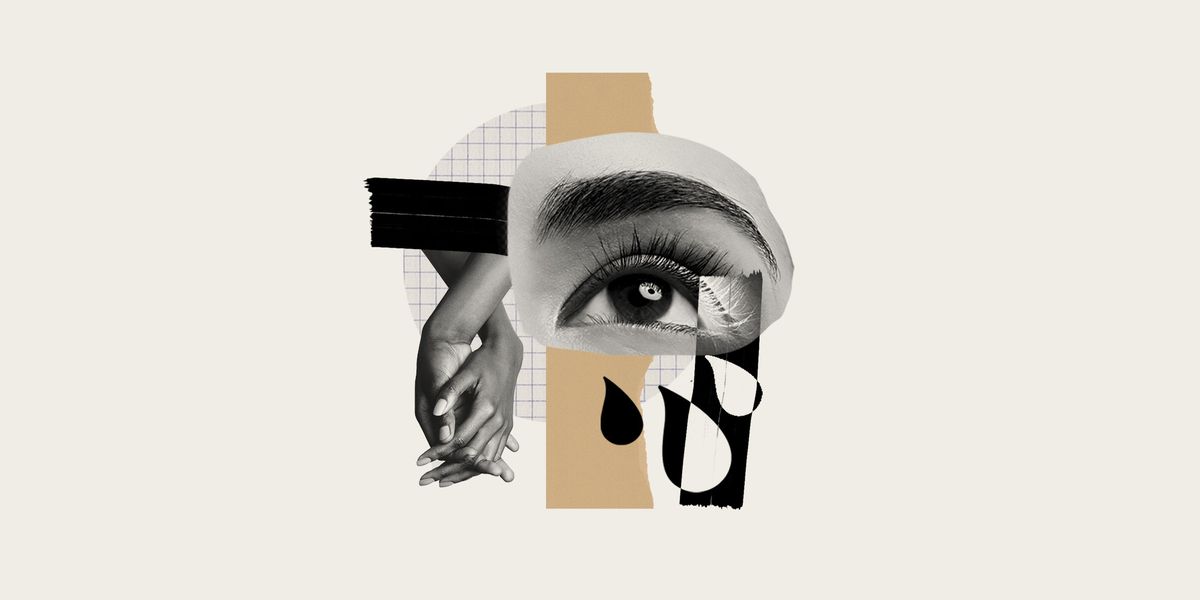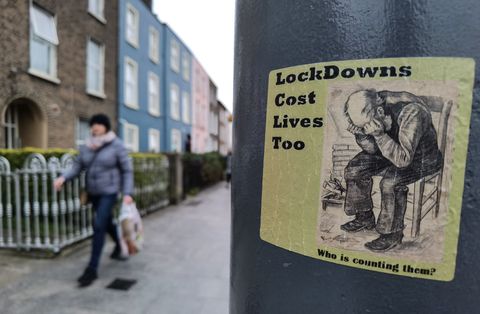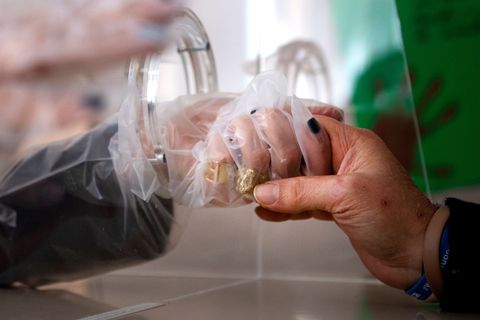Imagine walking into a crowded bar. A crowded bar full of unmasked people, talking and laughing and breathing and spewing aerosol particles into the air without the threat of an airborne virus looming over the room.
We should be stoked, right? This no longer feels like a far-off fantasy. The mass tragedy of COVID-19, where millions of people have lost loved ones, jobs, and their sense of normalcy, may relatively subside before the end of the year.
But if you’re anything like me, the thought of engaging in post-COVID life makes your skin prickle. It’s hard to imagine being able to enjoy life in the same way after the collective trauma we’ve all experienced, even if you’ve been largely spared from its most dramatic effects.
“Never before [have we been] so afraid in our generation,” says Dr. Karol Darsa, a licensed psychologist specializing in the treatment of trauma. “To have on an ongoing basis the idea that you’re going to be sick and that you might die—the fear of death is one of the worst fears.”
Though excitement around vaccines and reaching herd immunity may temporarily boost public optimism, experts are still cautious about the lingering mental health effects of the pandemic.
“Long after the masks come off, people who do not have proper coping mechanisms will suffer,” says Deborah Faust, a director at the Mental Health Association of New York (MHANY). Reports abound on the pandemic’s toll on mental health across demographic groups—young adults, mothers, school children, and more. Japan recently appointed a “Minister of Loneliness” to help address increased suicide rates and the New York Times reported that society’s declining psychological health should be treated as a second pandemic just as serious as the virus itself.
“[Collective trauma] has almost become a household word,” says Faust, who has run trauma-informed trainings, programming, and legislative advocacy for over 20 years. Now, Faust says, “we can work to reduce the symptoms of trauma in our society as a whole.”
Collective trauma, as defined in a 2018 article in Frontiers in Psychology, refers to the psychological reactions to a traumatic event that affect an entire society.
Trauma has always been a part of our culture, Faust says, we just haven’t had the tools—or, until fairly recently, even the language—to deal with it. But the mass effects of trauma from COVID-19 has drawn attention to the subject more than ever before.
But when it comes to collective trauma, the fabric of society feels shredded, and aside from our individual response, and it can be difficult to pinpoint how that trauma manifests itself in our everyday lives.
“It’s not the event itself that is traumatic, it’s our interpretation of it,” says Faust. What is traumatic for one person may not be traumatic for another, depending on our coping mechanisms or our exposure to past traumatic experiences.
There’s also a significant difference between everyday stress and traumatic stress—making the latter much harder to address.
“With stress, when the particular thing that we’re stressed about is resolved, the stress is reduced,” says Faust. “The difference between regular stress and traumatic stress is that once the event or the circumstance that we’re stressed about is removed, the stress is still there.”
Trauma affects both our emotional and physical health. “People have all kinds of physical symptoms,” says Faust. “Trauma is stored in our nervous system, and our bodies start to signal that trauma through illness and changes in mental health, chronic conditions, addiction, insomnia, all kinds of things.”
And it doesn’t end with the individual. “If unresolved [trauma] is not grieved and supported and processed, it will be transmitted to the next generation,” says Faust.
Figuring out a solution to the effects of collective trauma may prove challenging as international vaccination efforts take priority and much of the world is still seeing spikes in positive cases.
“We’ve had to focus so much on stemming the tide of new cases and treating people who are very, very sick,” says Dr. Greta Massetti, Branch Chief of the Field Epidemiology and Prevention at the Centers for Disease Control. “At some point, it will really be essential to think about how we rebuild long term community resilience and how we provide those supports.”
The CDC is in the process of collecting data about the toll on mental health from COVID-19 through ongoing surveys from the Census Bureau and National Center for Health Statistics.
But Faust says that though our experiences of the pandemic may be different, the manifestations of a collective trauma will be the same—increased issues with mental health, addiction, suicide, and more—and we need to start offering support now.
In April, MHANY released a legislative brief for New York State on how to address collective trauma in healthcare and frontline workers. Its suggestions included trauma-informed learning opportunities, trainings, and hotlines designed to help impacted workers and their families.
But the group has since expanded the scope of their recommendations to include the general public, giving experts a rare opportunity to scale what is known as “trauma-informed” messaging, which uses language and phrasing that assumes a history of trauma. At first I balked at the idea of public messaging as a solution to collective trauma—after what we’ve all been through, it feels like we’ll need a lot more than a friendly PSA. But Faust believes that a little public messaging can go a long way. Given our broad cultural deficit in understanding trauma, awareness is the first step. “People who never before understood the symptoms of trauma would be able to identify and seek the care that they need to recover,” she said.
Reinstilling institutional trust will also be critical—we can’t just be expected to keep coping on our own. Massetti noted that government and workplace resources to help build resilience will be just as important as providing economic strength to address some of the structural drivers that contribute to poor mental health.
“It’s going to be a significant challenge,” Massetti says. “But I think there are opportunities for us to think about how we better support Americans in the recovery post-COVID.”
At the very least, going through the collective, traumatic experience has primed us to begin healing together—while knowing we’re not alone. And while we wait for the world to fully open back up, experts say there are multiple ways to start building resilience so that we can actually enjoy the victory of defeating the virus when the time comes.
“The great thing about trauma recovery is that a lot of the paths to it are free,” says Faust. Not everyone can afford once-weekly meetings with a therapist, but another way to combat collective trauma is simply to connect with others—even if that feels difficult right now. Seeing friends, or maintaining a connection with at least one other person, is also a good predictor that “people will bounce back in a healthier way,” Massetti says.
Darsa also recommends practicing mindfulness—that oft-used buzzword—but in a way that feels helpful to you, whether that’s meditation, yoga, journaling, or something else entirely.
“Trauma has this capacity to hijack your brain—you are either worrying about the past or living in the fear of the future,” she says. “The antidote of trauma is practicing being here and now. What are you doing today? How are you eating? What are the self-care tools that you can do today and then the next day, too?”
Luckily, most people will easily re-adjust to post-COVID life, Darsa predicts, offering a hopeful prospect as the world begins to reopen: “Just as we adapted to this new normal—wearing masks all day, staying put—we will adapt again.”
This content is created and maintained by a third party, and imported onto this page to help users provide their email addresses. You may be able to find more information about this and similar content at piano.io


